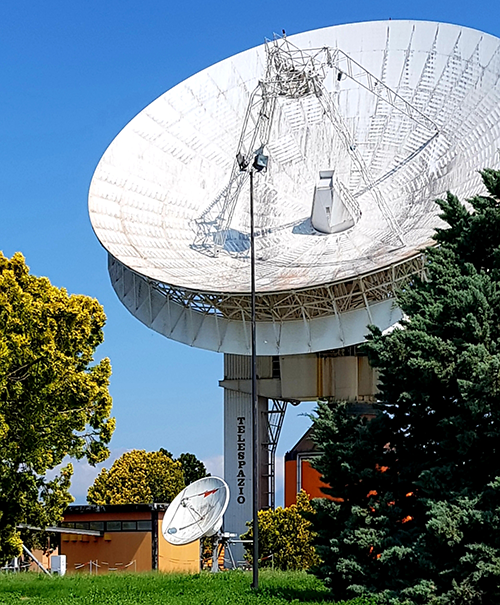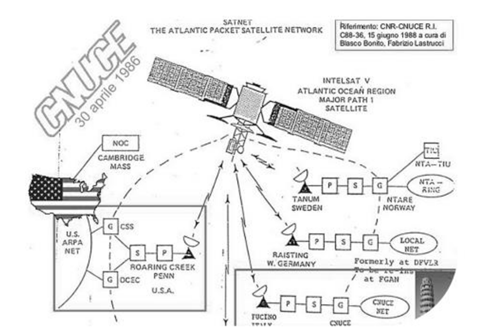12 April 2021
Six p.m. on the 30th of April 1986, at the CNUCE offices in Via di Santa Maria, in Pisa. Information systems technician Antonio Blasco Bonito types in “Ping”, and in less than a second, a reply is received from the United States: “OK”. This apparently unexciting conversation between machines marks a true milestone, as Italy officially becomes the fourth country in Europe to connect to the American Arpanet network, soon to be known as the Internet.

The satellite dish of the "Fucino Space Center" used to transmit the signal to the Intelsat V satellite and ensure the Arpanet connection between the United States and Italy.
On that Spring afternoon, the last piece of the puzzle that Bonito had been putting together with Luciano Lenzini and Stefano Trumpy over the course of six years was finally put in place. Connecting the computer in Pisa to the US network required preparation of a complex infrastructure capable of conveying a message to the other side of the world.
That Ping from the CNUCE travelled over a telephone cable belonging to SIP, which was Italy’s national telephone company at the time, to the Italcable station in Acilia. From there, it was redirected to the Fucino Space Centre, where a Telespazio antenna that is still in operation shot it off to the satellite Intelsat V and from there to its final destination, the Comsat station in Roaring Creek, Pennsylvania.

But this important milestone in history went entirely unnoticed at the time. The eyes of the world, and the media, were all on the nuclear power plant in Chernobyl, where one of the most serious accidents in history had taken place only four days earlier.
Unfortunate timing. And that’s not all. “Nobody understood what this really meant”, the three scientists commented several decades later. They themselves had no way of knowing “how much the Internet would change the world”. How do we know? It never even occurred to them to take a picture immortalising the moment.

